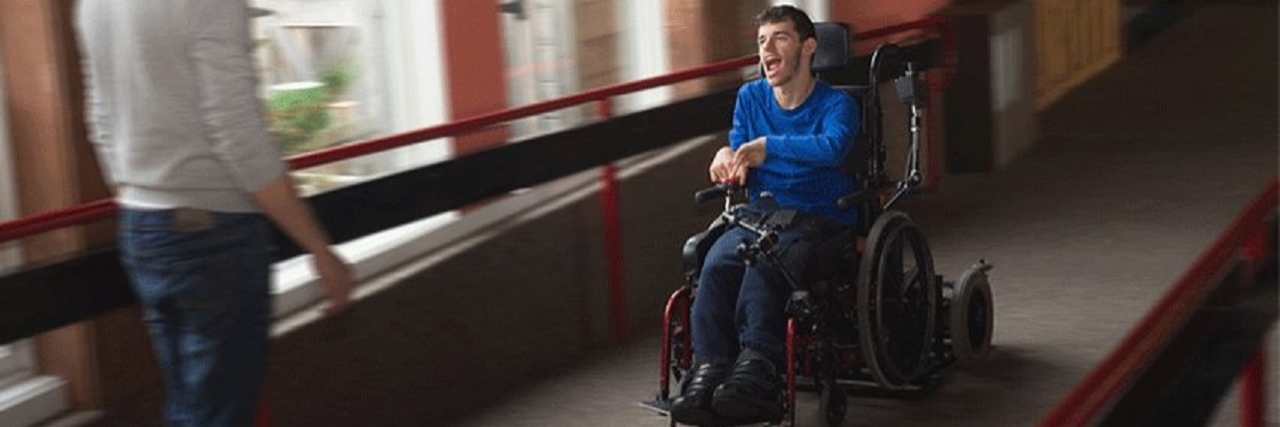What if any wheelchair could be transformed into a power wheelchair?
That’s the question John Damiao, director of the Power Mobility Program at The Center for Discovery, sought to answer. He works with children and adults who use wheelchairs, and grew frustrated that his students often couldn’t find a power chair that fit their unique needs, especially when it came to seating modifications.
So he decided to create a way to solve that problem: the indieGo, a universal device that rolls onto any manual wheelchair to convert it into a power chair.
And now, thanks to partnerships with the Center’s assistive technologies department and the Hurleyville Maker’s Lab, and a $1.125 million grant from Google.org’s Google Impact Challenge: Disabilities, the indieGo is becoming a reality. It’s currently being tested among residents at The Center for Discovery and is slated to be available to the public in late 2017.
“Whether the user uses a joystick or access switches, has a folding wheelchair or rigid wheelchair, the indieGo is designed to accommodate as many people as possible,” marketing lead Jason Kean told The Mighty. “We also understand the intricacies of having a device fit into someone’s life; that’s why we are designing indieGo to be highly portable so it can be easily placed in the trunk of a car or carried up a flight of steps.”
The three men behind indieGo – Kean, Damiao and project manager Mark McNamara – believe their product will redefine mobility.
“At the Center, we believe very strongly that everyone has the ‘Right to Move’ under their own volition,” Kean said. “indieGo is about enabling independent movement, regardless of wheelchair or ability.”
indieGo’s affordability, portability and open-source software open it up to a variety of applications.
“It can be an everyday power assist device for a manual wheelchair user in the community, a power mobility training tool for a rehabilitation center or hospital, a recreational device that can be shared for traveling long distances in a park, mall or museum, or a tool for learning and therapy for neuro-motor rehabilitation,” Kean said.
And it’ll retail for about $1,000 — about 1/7 of the price of a typical power wheelchair — making it ideal for both individual consumers and rehabilitation centers.
“indieGo is a device that is built to meet the needs of the underserved, to solve real everyday mobility problems,” Kean said. “By creating this device at an affordable price point, we are looking to give mobility to as many people as possible.”
That principle applies to access too; its controls can be adapted to each user’s abilities using joysticks, access switches and buttons.
Implications for the indieGo are broad, with an estimated 3.3 million wheelchair users in the United States alone and a power wheelchair market — too often plagued by sticker shock for consumers — projected to hit $3.9 billion by 2018.
McNamara summed up the premise of his team’s work in a promotional video:
“It’s going to blow the whole idea of wheelchairs out of the water.”

